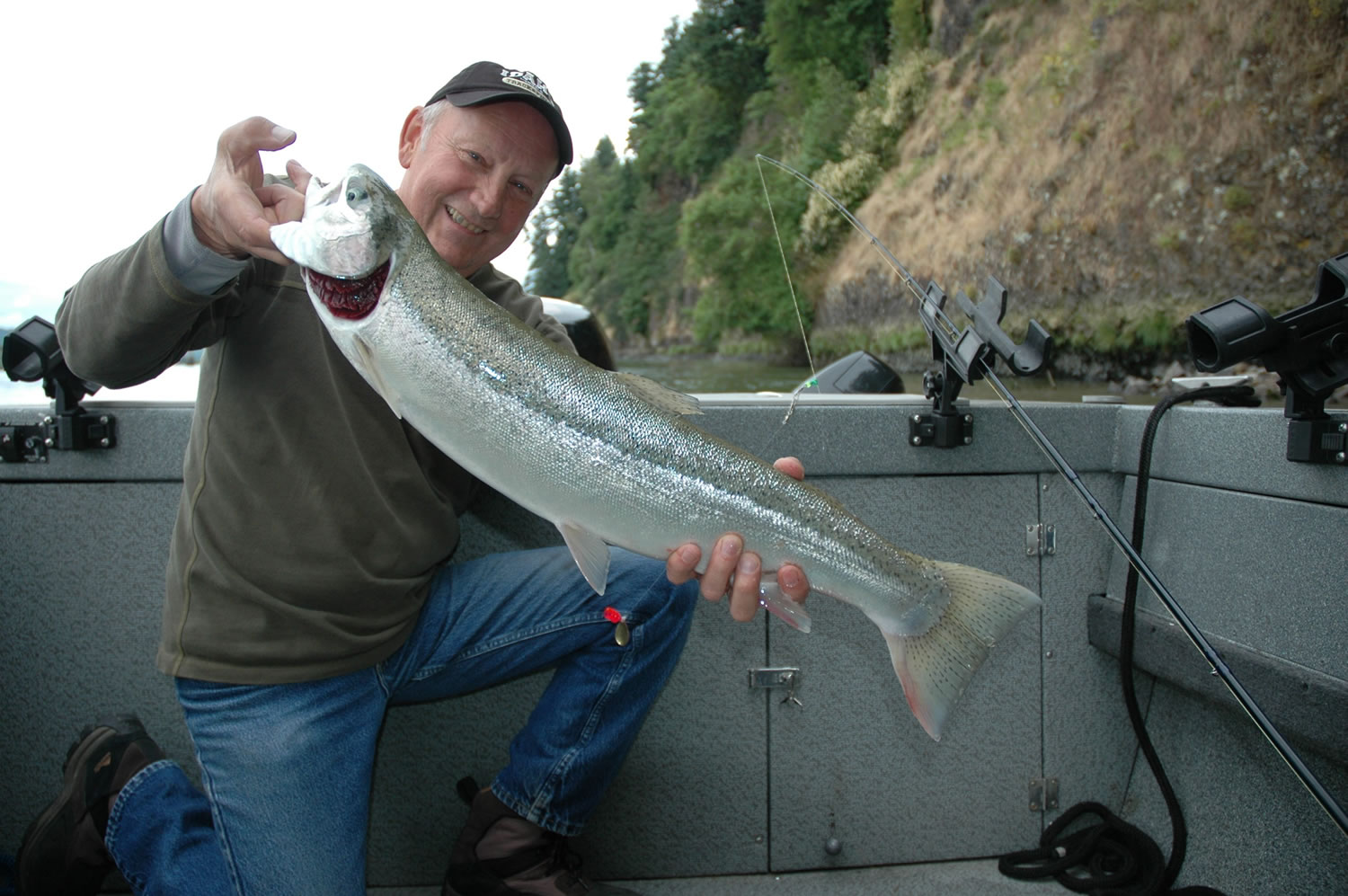Spring chinook
Jack catch of 5,542, tops old mark of 4,412 in 1971
Summer chinook
Angler trips of 75,818, tops 70,666 in 2010
Adult catch of 5,160, edges 4,924 in 2006
Jack catch of 2,430, crushes 1,217 in 2009
Sockeye
1,427 kept was almost 60 percent more than the old record of 900 sockeye kept in 2009
Summer steelhead
24,973 kept catch, blows away old mark of 18,324 in 2010
11,160 kept in August best for any month since 1969, tops 8,549 caught in July 2011
n 18,509 kept and released in August, old mark was 15,934 in July 2009
Fall chinook
147,343 angler trips, blow away old mark of 117,975 in 2009
28,269 adult kept, edges 26,195 in 2003
6,416 adults kept in August, easily tops 5,517 in 2009
1,578 adults kept in October, easily tops 983 in 2010
On Memorial Day weekend, the Columbia River was raging below Bonneville Dam. The river had topped 500,000 cubic feet per second for the first time since 1997. Visibility was about 24 inches.
The river would remain at more than a half-million cubic feet per second for three weeks. A massive snowpack was slowly making its way to the ocean.
Despite the high and dirty water, the most faithful in the Columbia River angling armada kept fishing.
Boaters would anchor in 10 feet of water or less, right along shore tight to the willows and cottonwoods. Bank anglers accessed the river at the beaches not inundated.




